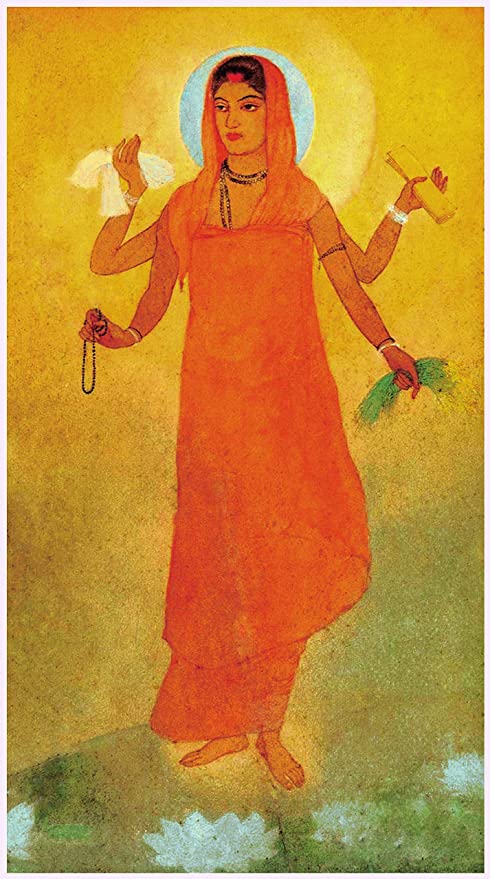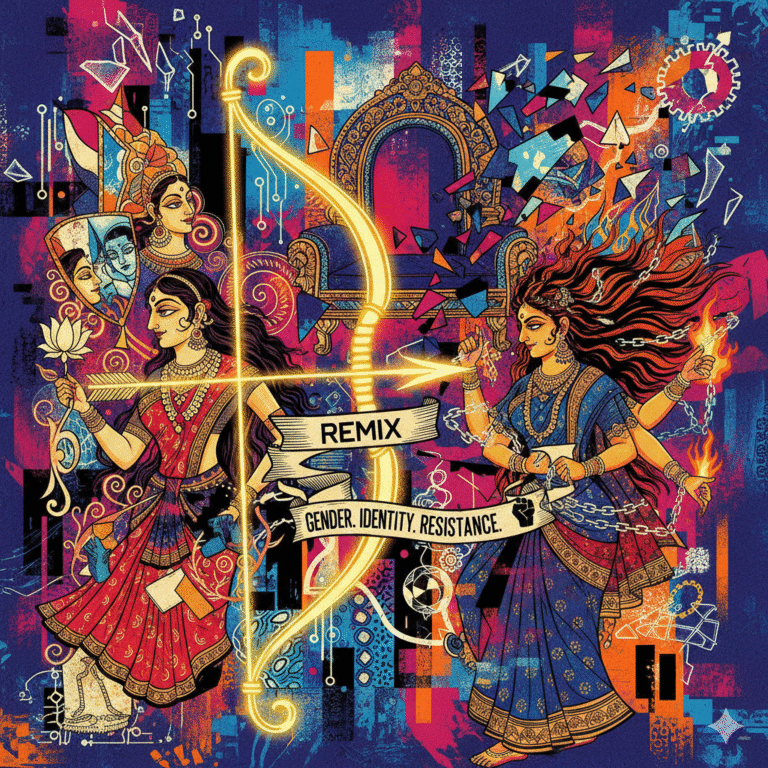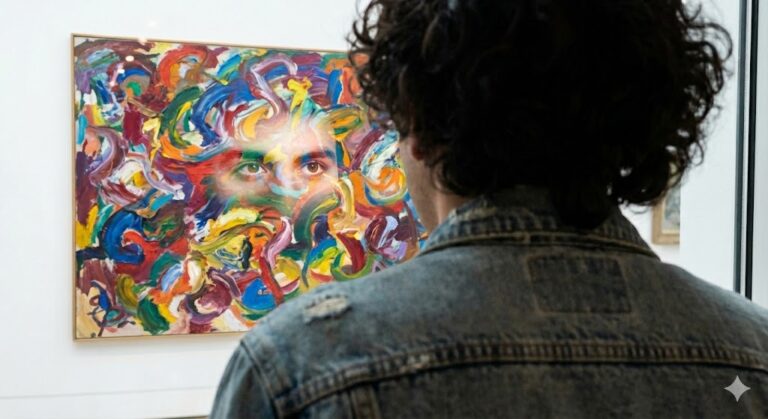Abanindranath was a man of varied creative talents. He wrote, rather drew stories for children while his paintings were stories by themselves. He was also a calligrapher who made woodcuts and was a constant learner. Nephew of poet Tagore, Abanindranath perhaps lived in his uncle’s shadow but emerged as the second most known Tagore, much because of his wide range of work. He was also an Esraj player and even designed toys for his grandchildren and their friends. He played a key role in doing set designs when Tagore put up his plays and dance dramas in the Jorasanko complex.

Bharat Mata by Abanindranath Tagore , Courtesy : amazon.in
Abanindranath was an enigma and continues to be one. His Bharat Mata has been the perfect representation of Mother India. Painted in 1905, the year of Bengal Partition of 1905, Mother is depicted wearing a saffron wrap, like a ‘Sadhvi’, with four hands, each holding palm leaves, white cloth, paddy and a Japa-mala. She represented the Swadeshi Movement and also that of India’s freedom struggle. The ethos of Bharat Mata has been best summed up by Sister Nivedita who almost single-handedly promoted Bengal School of painting by saying that the painting appeals to the Indian hearts and Indian languages. She aspired to have a copy of Bharat Mata in every Indian home down to village huts.
Abanindranath was influenced by different schools and styles of painting. The Mughal and Rajasthan miniatures, styles which he modernised to counter the influence of Western forms of Art. Abanindranath actually created a form of Indian art, inspired from the drawings of the Ajanta Caves to represent an art style which could be related to India’s freedom struggle.
In midst of all his artistic pre-occupation, he also wrote amazing stories for children. Some fairy tales, some drawn from tales of valour. His books have been the staple diet for children from middle class Bengali families and while some like Shakuntala was a prescribed book for school texts; Khirer Putul, Buro Angla, Nalok were in every bengali homes. Raj Kahini, stories of Rajput warriors and their valour sparked off the imagination of many young minds. Rajasthan became totally identified with Hamir, Bappaditya and Padmini. An insight in to the life at Jorasanko was co-authored by him with Rani Chanda, Jorasankor Dharey and Gharoa; they are autobiographical in nature and transports us to another world, another time.
However, Dakshiner veranda by his grandson Mohanlal Gangopadhaya tells us about Abanindranath — the loving, crazy, grandfather, while recreating the bygone era. Another book by him, Pathey Bipathey, is a delightful reading of people and places.
Abanindranath was Shilpiguru. Shilpi Acharya. He was more. He was a catalyst who made us love the roots of our country through his paintings and stories.
Here is the link to the facebook live session with Ruma Chakraborty who has translated stories from Abanindranath Tagore’s Raj Kahini.










+ There are no comments
Add yours